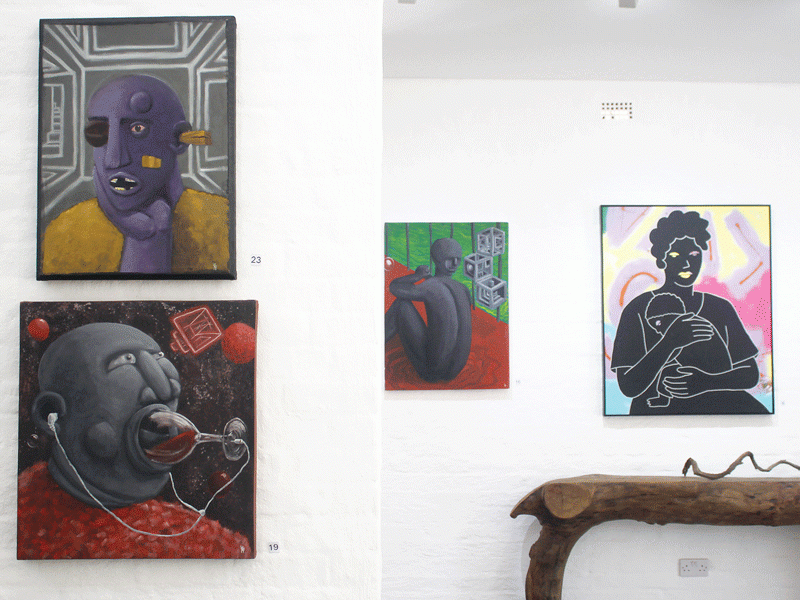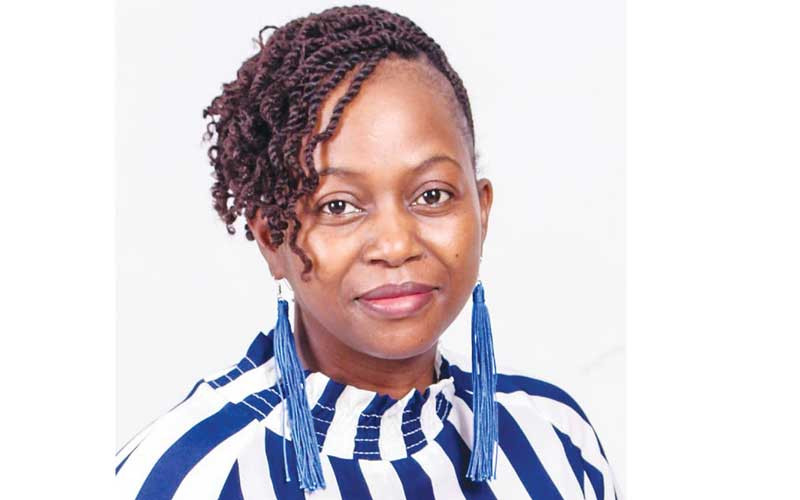
IF three Zimbabwean men were left alone in a room what would they talk about?
Most people will say sport, booze and the economy. On a different day the last part can be replaced with politics, religion or the opposite sex.
Loft 3 Gallery at Hunters Moon Estate in Highlands, Harare put up such a scenario by presenting three young black male artists in a group exhibition under the priming title What Changes.
The exhibition featured works by Kuda Chakwanda, Mthabisi Phili and Kuda Baskwa. Each artist may have personal stories to tell, but the artworks transcend individual narratives. Visitors' responses can be different, perhaps prompting the rhetorical question implied in the title of the exhibition. If someone came from the southern suburbs of Harare, disembark from a kombi at the fuel station, pass through the gate and walk across the gravel in the parking lot — the artworks could reflect their journey.
Phili’s work is predominantly about faces. In a subliminal way his work reminds the viewer that the face is a primary means of recognition and official identification.
His Monsters series is a collection of portraits expressive of the stifled condition where individuals are muted through self-censorship or repressive institutions.
Some figures appear to be gagged as if they are choking on their own words. In some cases the subject’s mouth is obstructed with a surgical face mask, by their own hand and forcefully by another’s hand. The artist does not even bother painting a mouth on face and others are preemptively rendered faceless.
Phili’s subjects however, remain communicative through the vivid expression in their eyes. The eyes provide a window into their internal struggles revealing terror, anger, despair and a plethora of other emotions.
- Letters: Women representation faces hurdles
- Letters: Makandiwa, preaching heresy
- CSO petitions Sadc over diaspora vote
- Nkosana Moyo steps down as Apa leader
Keep Reading
His largest piece on show is titled Legacies and is made up of 24 ghostly portraits that make the title sound more like an indictment than an inquiry. The miserable lot is a display of every conceivable resting bulldog face that can be revealed when the mask slides.
Kuda Baskwa’s Nasekuru, and Naambuya are powerfully evocative portraits of a child being held by a grandfather and a grandmother respectively. The simplicity of his lines and absence of distracting detail invite contemplation. After a silent moment, a twitch in the corner of the lips may tag the mouth into a smile of recognition! At that point the viewer’s spirit has been summoned from the labyrinth of a mind crowded with involuntary thoughts. What changes is that the picture is no longer about the child or the grandparents but about the watcher.
One who projects safe feelings of warm intimacy on the dry paint on cold canvas. Ndoita Sei portrays a despondent subject seated on their haunches with a hand on the head as a gesture of having arrived at their wits' end.
On the other hand the subject in the piece titled Zvichaita Chete is in an equally dire situation but remains hopeful. Ndoita Sei and Zvichaita Chete present a subject at a crossroads that many are familiar with. Baskwa’s depiction of such a challenging moment allows the subject to acknowledge and hold space for their feelings without losing themselves in a temporary crisis.
Chakwanda’s work can easily be identified by his surrealist style. There are some references to renowned Spanish surrealist artist Salvadore Dali in some of his work. Draftsmanship and symbolism are purposefully applied in ways that hold the viewers’ attention. While Dali was mainly concerned with exploring the theme of the subconscious his acolyte leans towards social commentary with titles such as Chiyeuka, Do what’s right and Hey Big Spender.
A piece titled Ndakambokuudza is a portrait of what appears to be a male figure cupping their jaw with a flummoxed expression on the face.
The subject’s battered face displays a blackened eye, missing teeth and band-aid on the cheekbone.
Even without the inverted title, a peg of wood protruding from the ear completes the story.
The peg is a Shona proverb that has been synthesised to a symbol. Another alliterative symbol is the swollen lump on the subject’s forehead, which is a clear reference to a Shona proverb that warns people against rejecting good advice.
What changes after contemplation is a dawning realisation that the artist is equally speaking to a projection of his shadow self.
The triad of Bulawayo-based Phili, Copenhagen-based Baskwa and Harare-based Chakwanda represent an awakening of deeper value systems to a population dogged by the long shadow of patriarchal flaws. They exhibit spiritual, political and more than humane concerns beyond public perception.
What Changes reveals the multidimensional personality of the modern Zimbabwean black male.







